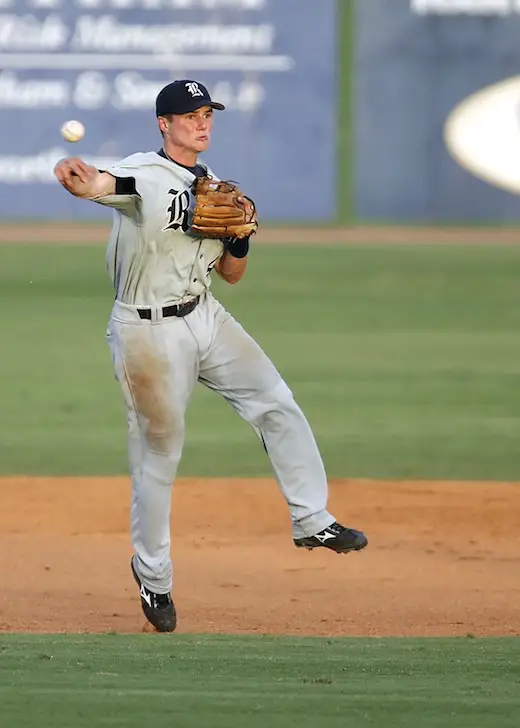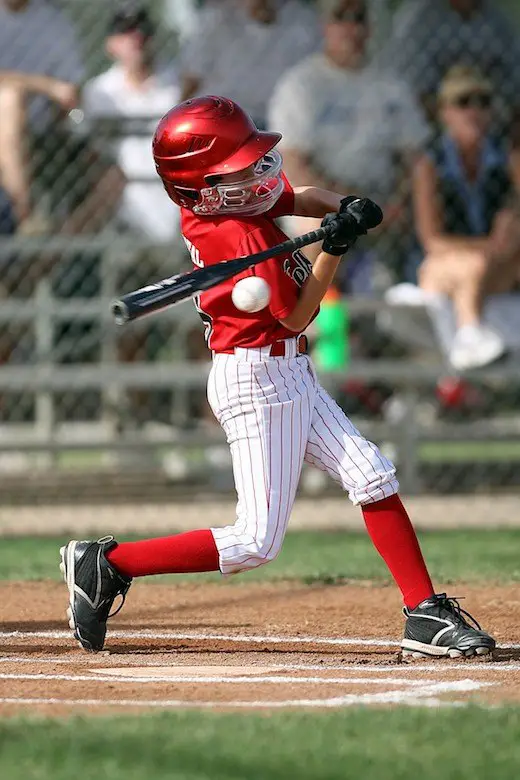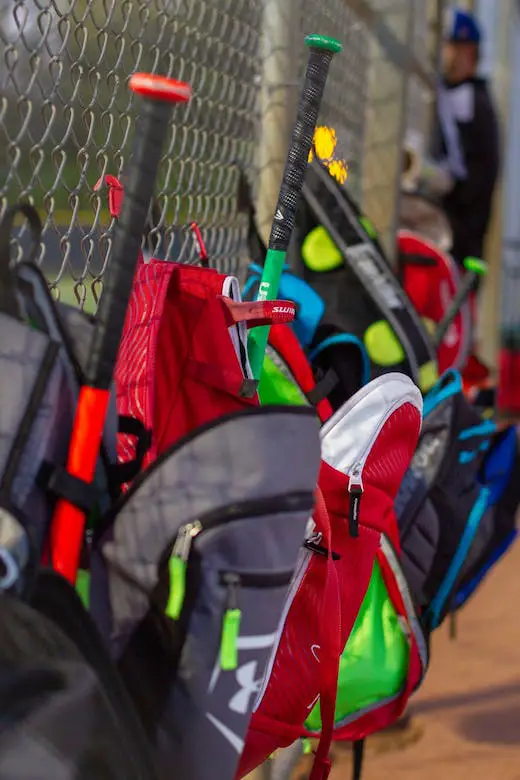Your Guide

Andrew Buller-Russ
As we continue looking at the best baseball equipment that you can possibly buy, this article will largely focus on various types of baseball gloves.
From youth baseball gloves to adult gloves and even gloves for lefties, we’ll cover it all.
Out Top Pick:
Of course, once you do get your hands on the right glove, you will want to make sure to take care of it, we’ll help you with that as well.
Like many other sports, baseball requires some specific equipment for players to even begin to play the sport.
Unlike soccer, where all you really need to play is a ball and a net, baseball requires a bat, ball, and gloves to even start playing.
Then, of course, you still need helmets, cleats, and more equipment to make the game EASIER TO PLAY.
Diving even further having the proper equipment can be the difference between a hit and an error.
For example, if you are trying to play first base with a second baseman’s glove, chances are you will struggle to field the ball EFFECTIVELY and CONSISTENTLY.
Generally, first basemen have a much larger glove to catch errant throws, and second basemen have a smaller glove to get the ball out of their hands quicker.
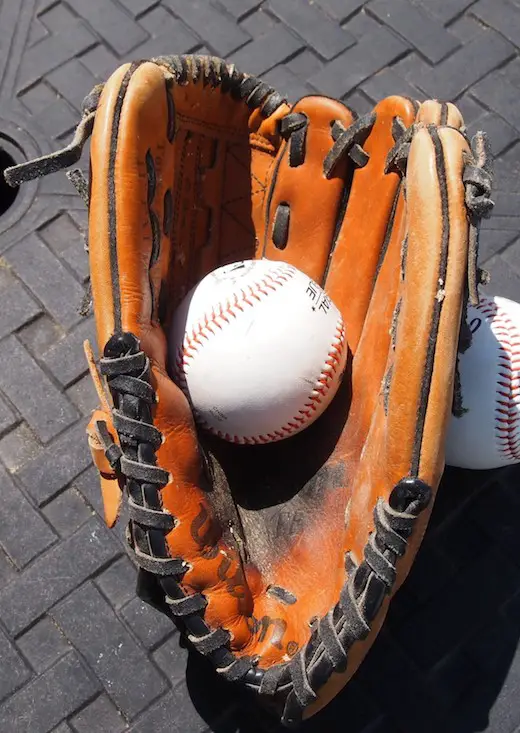
In fact, there are many helpful things to keep in mind when shopping for baseball gloves.
You do not need a specific glove to play baseball, but if you know which position you want to play, it can help.
If you know which position on the field you are best at or want to practice at, then you can focus on finding a specific glove that best sets you up to succeed.
Baseball gloves come in all shapes sizes and even what they are made with can fluctuate.
In modern baseball, maybe you have seen many of the brightly colored gloves players have been using.
Sometimes, this is to match team colors, and sometimes it could just be a preferred style or color preference.
There are many different brands of baseball glove manufacturers. I wouldn’t say that one brand consistently makes a BETTER GLOVE than another company.
I would say that it is best to go with whichever glove feels the most comfortable to you, which should lead to BOOSTED CONFIDENCE when on the baseball diamond.
I know that when you first start out shopping for baseball gloves, as you see all of the different sizes, styles and fit possibilities, it can all feel a bit too overwhelming.
I figured I would provide a brief breakdown as to which type of baseball glove you should be targeting when shopping locally or online.
Hopefully, this breakdown can help you have a much smoother shopping experience when looking for a glove.
First off, a few good things to know is which parts make up a baseball glove.
Just so you are familiar with the terms mentioned throughout the article, I thought it would be a good idea to list a picture, detailing the parts of the glove that you should familiarize yourself with. See the picture below:
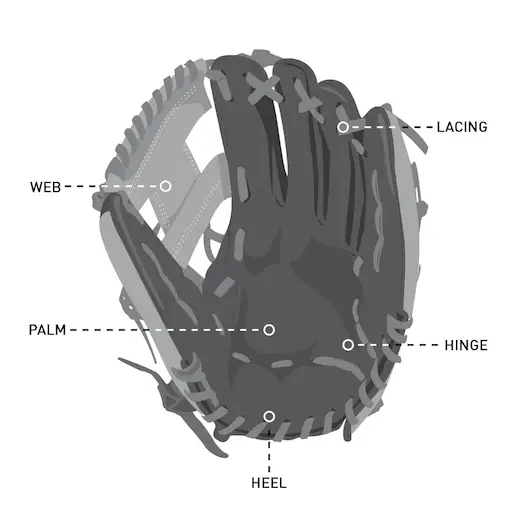
(Credit: dickssportinggoods.com)
As you can see, the parts of a glove are fairly simple. With just five basic terms to know, gloves are not too in-depth.
Though, they all serve an individual purpose that sets the glove up perfectly to catch baseballs with of course your guided operation.
The webbing is the net; this is largely what catches the baseball inline drive, pop-up and fly ball situations, especially the shoestring catches.
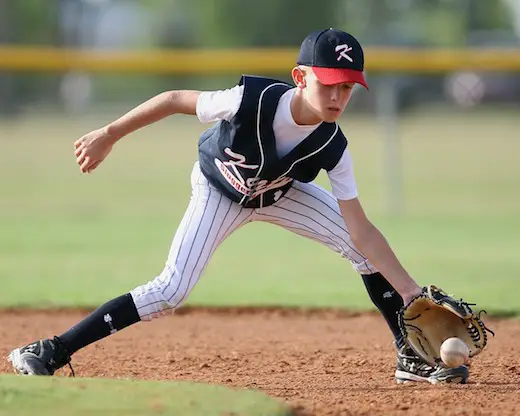
This web is what connects your fingers and thumb, which helps you control the ball once the ball contacts the glove.
The web is composed of tightly strung leather that allows fielders to close their hand or glove, securing the baseball in place.
The palm of the glove is just that, where your palm is placed inside the glove. This area offers padding beneath the leather to offer fielders protection from hard-hit balls.
It may not seem like much protection, but when you catch a line drive, you will be thankful that there is some cushion to lessen the impact on your hand and wrist area.
Located toward the bottom of the glove is the heel. This area also features leather string to help keep the glove together and help the glove be flexible.
The heel also provides protection for your lower hand and wrist area.
The lacing helps shape the baseball glove. Leather is most commonly used due to the flexibility and break-in period of the material.
Over time, lacing can become brittle and weak.
Another part of the glove that helps the glove move and stay flexible is the hinge. This allows the glove to open and close easily.
The hinge is located above the heel, next to the palm.
Some specific baseball gloves, more commonly seen in youth baseball is the wrist adjustment.
This feature allows the player to adjust the size and fit of the glove to fit the player using it. Wrist adjustments can vary from Velcro to buckles and more.
Like I mentioned earlier, having the correct style of baseball glove can go a long way toward success on the diamond.
In addition to different positions generally using different styled baseball gloves, there are also many different types of webbings used within those individual positions.
With up to 7 different web styles for fielders alone, simply buying a baseball glove, sometimes is not so simple at all.
I will quickly dive into the various webbing types you will see featured on different baseball gloves.
Some of which, you may never see. Here is a photo, with labels attached showing which web type is which:
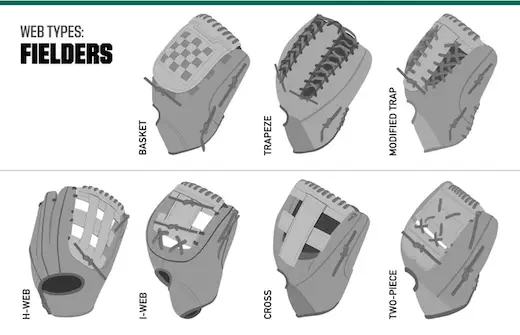
(Credit: dickssportinggoods)
One of the most common webbing types is the basket web seen above.
Generally, fielders like to use a glove with basket webbing. There are many different colors and styles you will see of baseball gloves with a basket webbing.
Pitchers also like basket webbing, as it doesn’t offer much room for gaps or light to escape. This allows them to hide the baseball from the opposing hitter, or even base runners and opposing coaches.
By being able to hide the baseball, pitchers benefit from being able to keep the hitters guessing as to which pitch may come next.
Basket webbing is also a flexible feature. Some other gloves may feel more stiff and tight.
Baseball gloves with basket webbing are easy to handle and help fielders shag wild baseballs headed their way.
Trapeze webbing is more commonly used among outfielders. The style of the trapeze web can help create a deeper pocket to help outfielders shag fly balls.
You may see a glove with trapeze webbing featuring a leather strap, in conjunction with lacing on each side of the strap.
The modified trap is used all over the baseball field. Pitchers, infielders and outfielders have all been known to use baseball gloves with a modified trap.
This style is not too far off from the trapeze, with a leather strip across the top of the web, offering more glove stability when catching the ball.
An H-Web is recognizable as one of the oldest baseball glove designs around. The simple, yet effective design is shaped like an “H”.
This web design is commonly used among infielders and outfielders, with many third basemen really liking this design.
The open web design of an H-Web would not be a good glove choice for pitchers as it has so much open space that allows the opponent to see the finger placement on the baseball stitching.
Conversely, some infielders prefer the H-Web because of the open style of the web design. This open design allows for loose material such as dirt and sand to fall through while maintaining the rigidity required to field a hard hit baseball.
An I-Web glove design is a bit less common across baseball. Like the H-Web, the I-Web gets its name from its shape.
This web pattern has been used by infielders as well, like the H-Web.
The cross web, also known as the single post, is a glove web design that offers both flexibility and visibility.
This web style has a single, vertical leather strip matched with two horizontal bars to form the webbing.
The cross design of the single post allows for fielders to peek through the glove while helping block out the sun when trying to shag a fly ball.
A two-piece baseball glove web design can be a great option for pitchers to use. The limited outside visibility of the glove helps pitchers conceal their pitches from opponents.
Though, the double leather patches can also make for a heavier glove, which may not be ideal in some circumstances.
Infielders typically like to use five-fingered gloves with shallow pockets. This allows them to quickly retrieve the ball and get it out of their hands with efficiency. Typically, middle infielders have smaller gloves.
Outfielders generally require a larger, deeper pocket to catch fly balls.
On top of that, having a longer glove benefits outfielders by extending their reach and fielding range.
Generally, outfielders will have a larger glove than middle infielders.

(Credit: dickssportinggoods.com)
Next up, we will dive into the various web styles preferred by first basemen.
As you can see from the picture above, there are typically three different web designs the first basemen will choose to use.
There is no right or wrong, this is more about what you are comfortable with and what you prefer to use.
The single post, seen previously when looking at fielders gloves, offers great visibility and flexibility.
Also known as the cross pattern, this design features two pieces of leather strung across a single, vertical post.
The flexibility of the single post makes this a great glove choice for first basemen.
A modified H-Web takes the standard H-Web and adds a leather strip across the top.
The design of the H-Web allows for an expanded catch radius for first basemen. This expanded catch radius makes fielding easier for first basemen.
Another frequent web style for first basemen is the dual bar. Dual-bar webs have two horizontal leather straps or bars stitched together.
This design forms the pocket, which is what helps first basemen trap and secure the ball.
First basemen generally use a long, wide mitt to scoop grounders from the dirt.
The longer glove design also helps first basemen field off-target throws from infielders. Since first basemen catch the ball the most, other than catchers, they need to have a very large mitt.

(Credit: dickssportinggoods)
Catchers frequently stick with either the half-moon or a one-piece design. With two leather pieces laced together, the half-moon is not much different than a two-piece web style.
This half-moon design invokes a tight pocket, offering more flexibility than common one-piece styles.
The one-piece design is pretty straightforward. Featuring one large piece of leather, the one-piece web style is very popular among catchers.
Outer lacing around the edge creates a tight, narrow pocket.
Typically it is best for catchers to use a fingerless mitt with heavy padding. This helps reduce the sting from the ball.
The catcher and his glove should create a claw-like shape for the pitcher to target with his throws.
On top of all these web designs to keep in mind, once you have narrowed the field down, you can begin to focus on the other important parts of choosing a glove: Fit, Feel and Style.
The fit of the glove greatly determines how a glove feels on your hand. Buying a glove too large will likely cause your performance to suffer.
A glove too small will feel uncomfortable on your hand and could cause other problems such as rashes.
Understanding how your glove should feel is key to improving performance in the field.
A glove should have a certain amount of stiffness to it, while remaining flexible. Striking that ideal balance can be tricky.
A glove too stiff may not be ideal as this can lead to more difficulty when trying to close the glove.
Having a glove that is too flexible or weak, may not be able to hold up against those hard-hit lines drives sent your way.
Many gloves start out stiff and will loosen or break-in as they receive more use.
Of course, the glove style is important too, although it shouldn’t really affect your performance.
Other than the glove web design, the glove style such as the color of the glove itself and the lacing can also be altered.
I would say to find a glove web design, with the ideal fit before you worry about custom colors.
If you have the option to try on a few different types of gloves, that is ideal.
By trying a variety of gloves, you should be able to get a much greater feel for what to shop for.
Now that you have a better idea of the types of gloves available on the market, you should have a greater understanding of what to look for when shopping.
Best Baseball Gloves
Best Youth and Little League Baseball Gloves
Best Baseball Gloves For High School
Best Baseball Gloves For Pitchers
Best Infield Baseball Gloves
Best Outfield Baseball Gloves
Best Baseball Gloves For Left handed Players
Affordable Baseball Gloves Under $100
Best Oil For Baseball Gloves
Best Baseball Batting Gloves
FAQ
What gloves do MLB players use?
Wilson and Rawlings Brand Gloves are popular among MLB Players
How much is a good baseball glove?
It can range between $40 – $350. The average prices for good baseball gloves depends on the brands and the material used.
Why are baseball gloves so expensive?
Because of the materials used to make the glove. You’ll find the cheaper baseball gloves are nowhere as good as more expensive gloves.
Do MLB players buy their own gloves?
MLB players may have an agreement with manufacturer or gear producing company for their gear or MLB teams pay for it.
Which Types Of Leather Are Used For Baseball Gloves?
Since baseball has been around forever and so many people are so passionate about the great sport, there have been many innovations throughout the storied history of the game to help make it what it is today.
One thing many baseball players and fans may not know is that there are many different types of leather used when making a baseball glove.
Generally, though, they can all be broken down into 4 different subgroups.
The 4 most commonly used types of leather are:
Full Grain Leather, Kip (Kipskin), Premium Steerhide, and Leather or Cowhide. Different types of leather can affect the look, weight and durability of the glove.
Next, I will break down some quick differences between leather materials.
Full-grain leather refers to cowhide leather with the natural grain still intact. This leather is typically heavier and stiffer than other gloves.
Full-grain leather gloves have a longer break-in time, but once broken in, they offer impressive performance and durability.
Kip or Kipskin leather is soft and seen to be a bit luxurious thus it is generally used for higher echelon gloves.
Kip leather is lightweight compared to cowhide, making it a great leather material for infielder’s gloves. Gloves made from kip leather don’t take very long to break in.
Premium steerhide is strong leather and is one of the stiffest, heaviest and more durable types of leather used to make gloves. This leather is also tough and takes more work to break in.
Don’t let the rugged toughness fool you though, premium steerhide is quality leather and a popular choice among pro ballplayers.
Leather or Cowhide is probably most commonly used when making youth baseball gloves. It is generally a medium-weighted leather that performs well and breaks in quickly. Cowhide also wears out quicker than say steer hide.
Since everyone has their own preference and not everyone plays the same position, there isn’t necessarily a “best” type of leather to use. It really comes down to personal preference.
Are you looking for a tough, stiff and durable glove or are you in the market for a lightweight and nimble glove?
These are the questions you should be asking or possibly already know.
Hopefully, my breakdown of the different leather types used to make baseball gloves will help as you shop.
If you can, try and experiment with a few different types of leather to see what you may prefer to work with.

At the end of the day there were many great baseball gloves that we couldn’t find a spot for on our list.
Rawlings, Wilson, Nokona, Shoeless Joe, Louisville Slugger, Mizuno and many other brands all make really good gloves.
We should only be so lucky to have such a great selection of baseball gloves to choose from.
I can already see some of the innovations these brands have implemented becoming quite popular among the baseball community.
It is only a matter of time that other brands try and copy them or instill unique qualities of their own to set their brand apart.
I cannot wait to see the advancements of baseball gloves in the upcoming years to come.
Hopefully after reading this baseball glove buying guide you have a much better idea when shopping for your next glove.
I know there is a lot to absorb and sift through, but once you have had a chance to divulge all the information here, feel free to reach out and let me know how this guide has helped you.
I always like to hear from aspiring athletes and parents about how my suggestions have helped them along the way.
I know I missed several top baseball gloves on this list. Vent to me in the comments below. Which of your favorite gloves did I somehow leave off the list?








